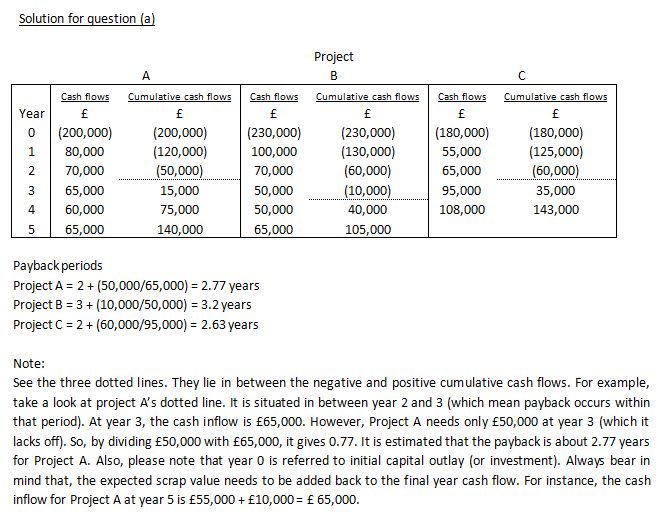By Jackie, Researcher
Topic: Education
Area of discussion: Management & Cost
Accounting
Chapter: Capital investment decisions –
appraisal methods
The objective of this posting is to share
a ‘question & answer’ related to capital investment decision. A real past
year question was taken from AAT Stage 3 Cost Accounting and Budgeting. I hope
this posting will help more students to understand payback, accounting rate of
return and net present value calculations better. Some parts of it might be
tricky where it tries to confuse students. Besides, normally professional exams
questions will ask a bit on its theoretical concepts or other qualitative
measures. Hopefully, this posting will help students to eliminate the fear in
exams and to score with flying colours.
Payback is defined as the length of time
that is required for a stream of cash proceeds from an investment to recover
the original cash outlay required by the investment. If the stream of cash
flows from the investment is constant each year, the payback period can be
calculated by dividing the total initial cash outlay by the amount of the
expected annual cash proceeds. However, if the stream of expected proceeds is
not constant from year to year, the payback period is determined by adding up
the cash inflows expected in successive years until the total is equal to the original
outlay (see below).
Accounting rate of return uses profits rather than cash
flows. Therefore, to find out the profits, we have to take cash flows minus
depreciation. Do not add the scrap value back to the final year’s cash flow.
This is because scrap value is not profit. Remember, if all things are run
accordingly, there will be no ‘gain or loss on disposal’, thus it will not
affect the profits. The average investment under this assumption is one-half of
the amount of the initial investment plus one-half of the scrap value at the
end of the project’s life.
Net present
value (NPV) is computed using net cash inflows less the project’s initial
investment outlay. A positive NPV indicates that an investment should be accepted,
while a negative value indicates that it should be rejected. A zero NPV
calculation indicates that the firm should be indifferent to whether the
project is accepted or rejected.
Normally,
for the last sub-question of the investment appraisal decisions, the examiners
will frequently ask the students on which is the most favorable investment
project. Sometimes, when there is a conflict in ranking between the few
investment appraisal methods, NPV method will be the key decision factor.
Not all
investment projects can be described completely in terms of monetary costs and
benefits. There is also a danger that those aspects of a new investment that
are difficult to quantify may be omitted from the financial appraisal.
Additional
readings, related links and references:
Payback Period: Meaning, Calculation, Example,
Usage and Consideration.
Investment Appraisals: A guide to
calculating ARR, the accounting rate of return.
Net
Present Value (NPV): Tutorials, Calculators, Android Apps, Excel Solutions
& Tables for Finance
Watch a short introduction video
to Investment Appraisal Methods





